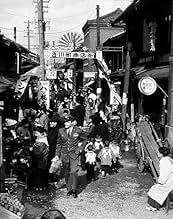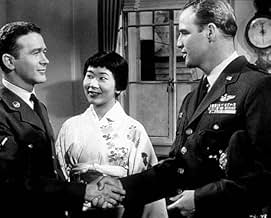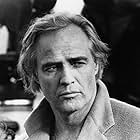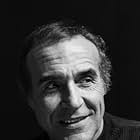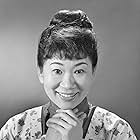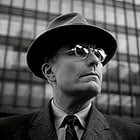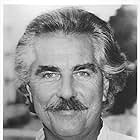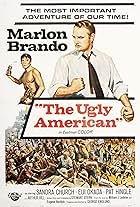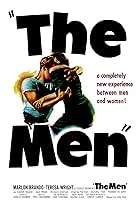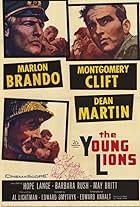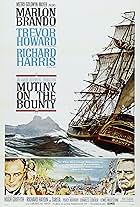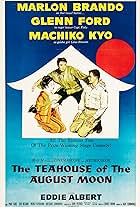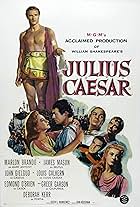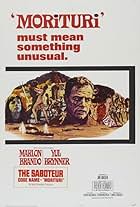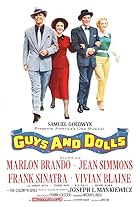A US Air Force major in Kobe confronts his own opposition to marriages between American servicemen and Japanese women when he falls for a beautiful performer.A US Air Force major in Kobe confronts his own opposition to marriages between American servicemen and Japanese women when he falls for a beautiful performer.A US Air Force major in Kobe confronts his own opposition to marriages between American servicemen and Japanese women when he falls for a beautiful performer.
- Won 4 Oscars
- 8 wins & 18 nominations total
Douglass Watson
- Colonel Crawford
- (as Douglas Watson)
Peter Brown
- Second Military Police
- (voice)
- (uncredited)
Jane Chung
- Undetermined Secondary Role
- (uncredited)
Carlo Fiori
- Chaplain
- (uncredited)
Dennis Hopper
- Military Police
- (voice)
- (uncredited)
Kenner G. Kemp
- General at Tokyo Airport
- (uncredited)
- Director
- Writers
- All cast & crew
- Production, box office & more at IMDbPro
Storyline
Did you know
- TriviaAudrey Hepburn was offered the role of a Japanese bride opposite Marlon Brando but turned it down. She explained that she "couldn't possibly play an Oriental. No one would believe me; they'd laugh. It's a lovely script, however I know what I can and can't do. And if you did persuade me, you would regret it, because I would be terrible."
- GoofsMajor Gruver, said to be a West Point graduate is shown wearing his class ring on his right hand. Academy graduates always wore their class rings on their left hand, a mark of distinction.
- Quotes
Major Gruver: [at a traditional tea ceremony: watching, as a Japanese man spends a lot of time carefully making a cup of tea] He makes such a production of everything.
Hana-ogi: The pleasure does not lie in the end itself... it's the pleasurable steps *to* that end.
- ConnectionsFeatured in Slaying the Dragon (1988)
Featured review
Brando's position in the pantheon of the greats is secure. Now that
he is gone, (his life expired just yesterday) it will be worthwhile to
review his legacy. Pictures like 'Sayonara', which were grade 'A'
productions, but subject to criticism when they came out ,can now
be viewed in a new light. We can now see the care lavished upon
them. 'Sayonara' is a superb film in every category.
Brando's odd (to say the least) 'southern' accent proves to be a
brilliant choice in defining his character's contrasting presence in
the Japanese scene, an approach he would employ later in his
amazing, bizarre interpretation of Fletcher Christian. Whatever one
thinks of Brando's choices in tackling a role, he was never dull,
and watching him experiment is a viewer's treat. And Miyoshi
Umeki: what a discovery! The portrayal of those in Japan who are
just living their lives is done with sensitivity and humanity.
Just as important as the stars' performance and the story itself, is
Franz Waxman's music. It cannot be praised too highly, and is a
perfect example of a meticulously crafted score: mature, totally
sincere, and without one trace of cynicism or misdirection. Film
music like this is safe from being taken for granted. Waxman's
theme for the Red Buttons/Miyoshi Umeki relationship is among
the most poignant and haunting even written for the screen. Its
variations range from wistful to heartbreaking.
None other than Irving Berlin supplied the title song (he gets as
much screen credit as Waxman!). No pop hit, it nevertheless
integrates well with Waxman's score.
Ellsworth Fredericks' masterful Technirama lensing makes this
picture one of the best of the 50s. Seeing it in widescreen is a
thrilling event. The title sequence, in red lettering, is a fine example
of how every department, even one which deals with the 'job' of
giving credit, made sure that each element of a film like this
worked in concert with each other, to create a cohesive whole.
What a pleasure it is to have a proper introduction to a film, with
visuals and overture tailored to the drama to come. Such was the
style then. Bill Goetz produced. Thanks, Bill!
Josh Logan as a director is often reviled, but why is it then, that his
pictures are especially enjoyable, particularly with repeat
viewings? His huge closeups are terrific! He really went for the
gusto in splashing his stories on the screen, and made the most
of the 'big Hollywood production' thing.
Jack L. Warner's mid to late 50s productions rivaled 20th-Fox's in
lavishness and quality. Fortunately for us, the fans of pictures like
'Sayonara', he and Zanuck always tried to outdo each other.
Tonight, to honor the memory of Marlon Brando, I'm rolling
'Sayonara'.
he is gone, (his life expired just yesterday) it will be worthwhile to
review his legacy. Pictures like 'Sayonara', which were grade 'A'
productions, but subject to criticism when they came out ,can now
be viewed in a new light. We can now see the care lavished upon
them. 'Sayonara' is a superb film in every category.
Brando's odd (to say the least) 'southern' accent proves to be a
brilliant choice in defining his character's contrasting presence in
the Japanese scene, an approach he would employ later in his
amazing, bizarre interpretation of Fletcher Christian. Whatever one
thinks of Brando's choices in tackling a role, he was never dull,
and watching him experiment is a viewer's treat. And Miyoshi
Umeki: what a discovery! The portrayal of those in Japan who are
just living their lives is done with sensitivity and humanity.
Just as important as the stars' performance and the story itself, is
Franz Waxman's music. It cannot be praised too highly, and is a
perfect example of a meticulously crafted score: mature, totally
sincere, and without one trace of cynicism or misdirection. Film
music like this is safe from being taken for granted. Waxman's
theme for the Red Buttons/Miyoshi Umeki relationship is among
the most poignant and haunting even written for the screen. Its
variations range from wistful to heartbreaking.
None other than Irving Berlin supplied the title song (he gets as
much screen credit as Waxman!). No pop hit, it nevertheless
integrates well with Waxman's score.
Ellsworth Fredericks' masterful Technirama lensing makes this
picture one of the best of the 50s. Seeing it in widescreen is a
thrilling event. The title sequence, in red lettering, is a fine example
of how every department, even one which deals with the 'job' of
giving credit, made sure that each element of a film like this
worked in concert with each other, to create a cohesive whole.
What a pleasure it is to have a proper introduction to a film, with
visuals and overture tailored to the drama to come. Such was the
style then. Bill Goetz produced. Thanks, Bill!
Josh Logan as a director is often reviled, but why is it then, that his
pictures are especially enjoyable, particularly with repeat
viewings? His huge closeups are terrific! He really went for the
gusto in splashing his stories on the screen, and made the most
of the 'big Hollywood production' thing.
Jack L. Warner's mid to late 50s productions rivaled 20th-Fox's in
lavishness and quality. Fortunately for us, the fans of pictures like
'Sayonara', he and Zanuck always tried to outdo each other.
Tonight, to honor the memory of Marlon Brando, I'm rolling
'Sayonara'.
Details
Box office
- Gross US & Canada
- $26,300,000
- Runtime2 hours 27 minutes
- Color
Contribute to this page
Suggest an edit or add missing content







